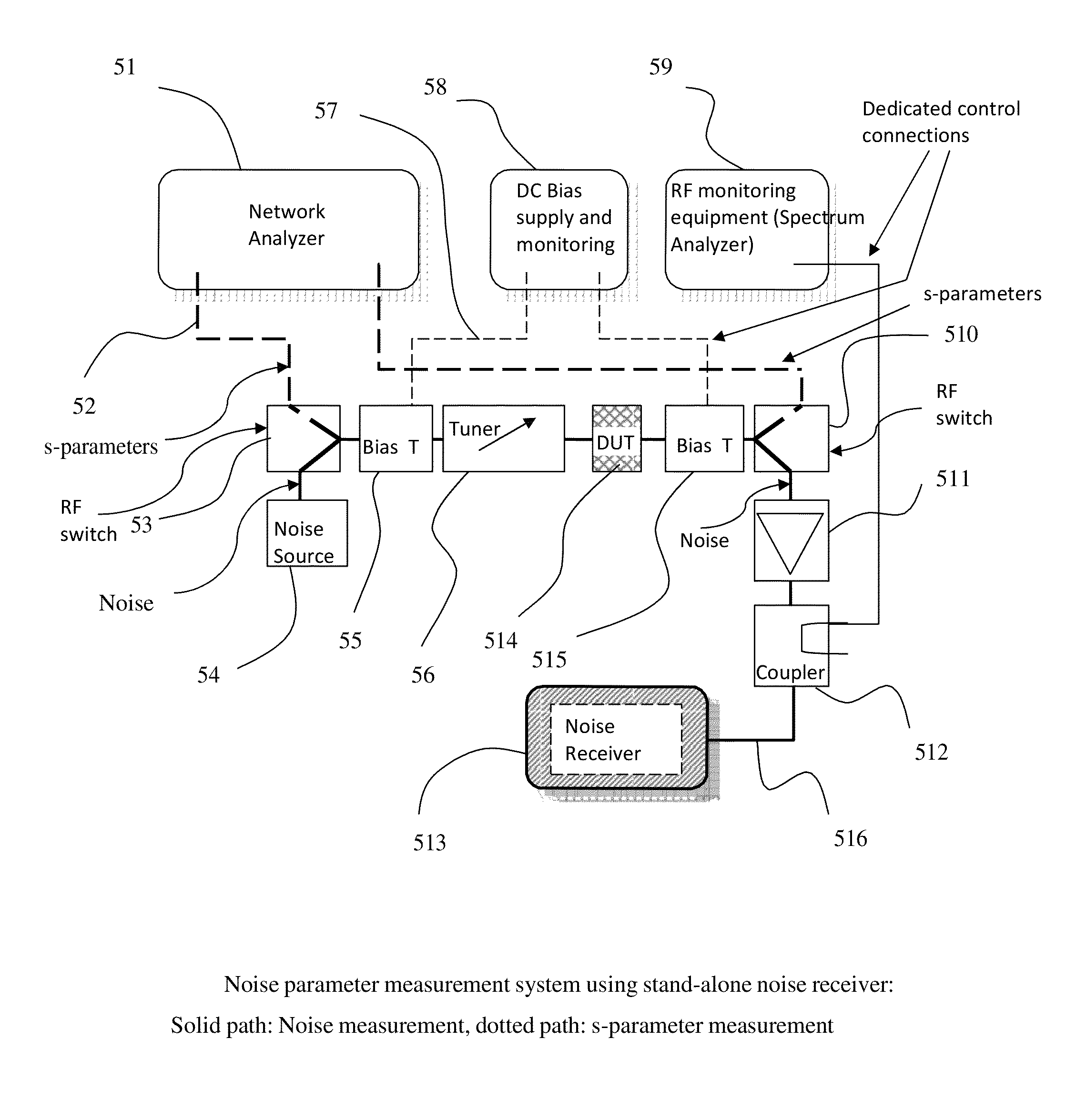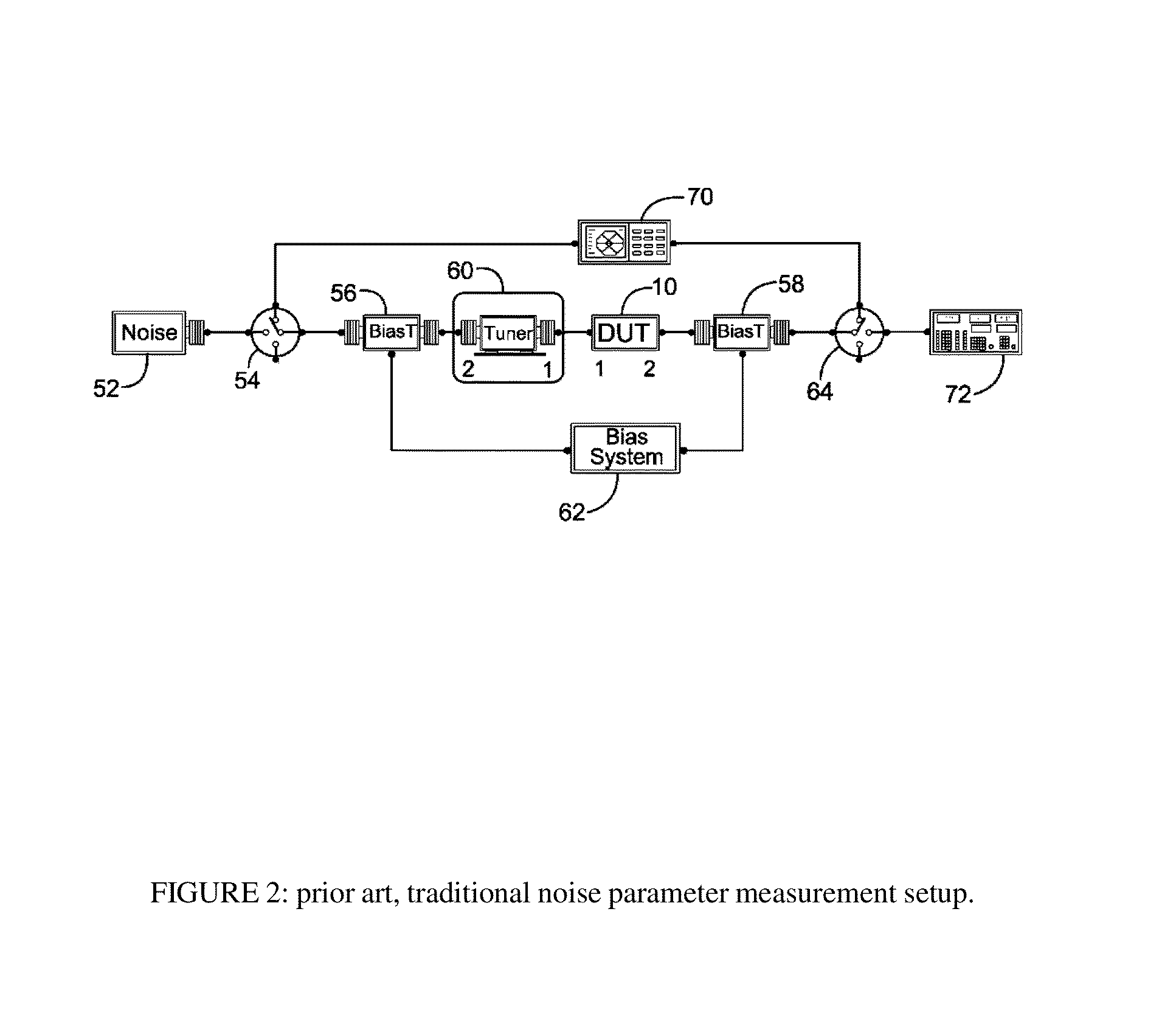Noise parameter measurement system and method
a noise parameter and measurement system technology, applied in the field of noise parameter measurement system and method, can solve the problems of difficult identification and elimination, measurement errors and uncertainties, and extremely sensitive noise measurements
- Summary
- Abstract
- Description
- Claims
- Application Information
AI Technical Summary
Benefits of technology
Problems solved by technology
Method used
Image
Examples
Embodiment Construction
[0040]The method described here can be employed with three different test setups depending on the available test equipment (FIGS. 5, 6 and 7). In FIG. 5 a network analyzer (51) is included, as a separate unit from the noise receiver (513) and can be switched on to the DUT (514), path (52) using switches (53) and (510) in order to measure the S-parameters of the DUT. In this case the tuner (56) is initialized (=full transmission line) and the two bias tees (55) and (515) are part of a previous calibration, which allows de-embedding the S-parameters and correcting to the DUT reference plane [10]. The receiver (513) is preceded by a low noise amplifier (511) which increases the sensitivity of the measurement and a directional coupler (512) which allows connecting to a spectrum analyzer (59) for detecting spurious oscillations but also spurious interfering signals from outside. The power supply (58) is also monitored by the control computer, in order to detect bias instabilities during ...
PUM
 Login to View More
Login to View More Abstract
Description
Claims
Application Information
 Login to View More
Login to View More - R&D
- Intellectual Property
- Life Sciences
- Materials
- Tech Scout
- Unparalleled Data Quality
- Higher Quality Content
- 60% Fewer Hallucinations
Browse by: Latest US Patents, China's latest patents, Technical Efficacy Thesaurus, Application Domain, Technology Topic, Popular Technical Reports.
© 2025 PatSnap. All rights reserved.Legal|Privacy policy|Modern Slavery Act Transparency Statement|Sitemap|About US| Contact US: help@patsnap.com



